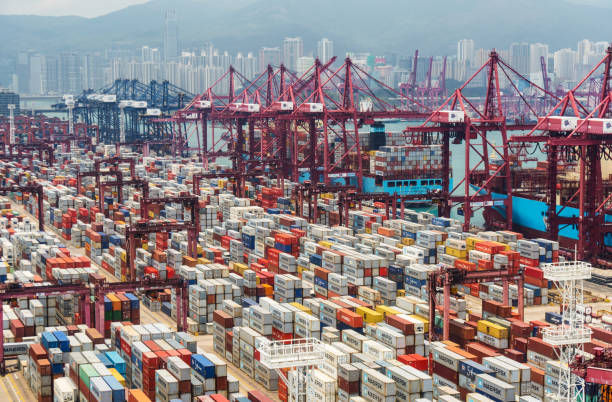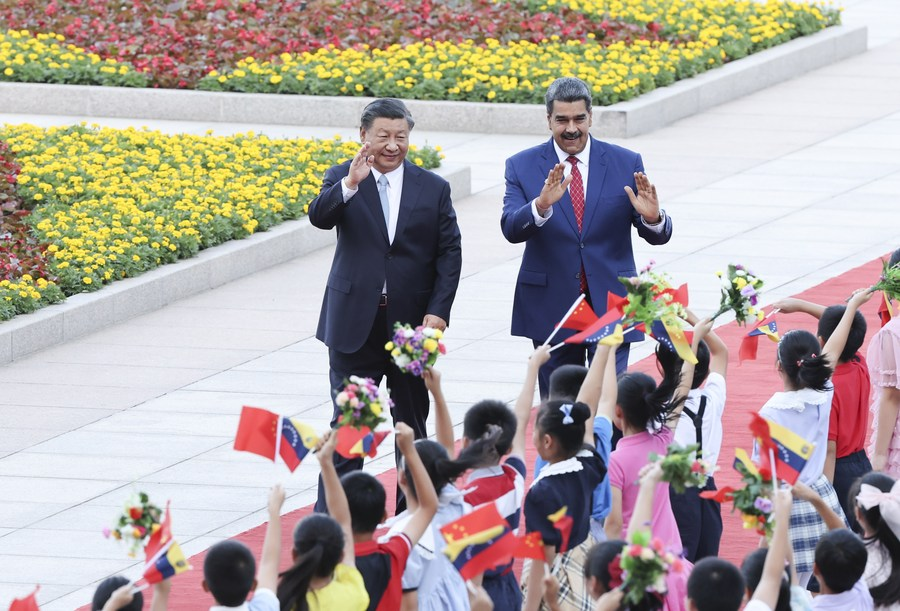China's Outbound Foreign Direct Investments Surge to Record Highs in 2024: A Detailed Analysis for Business and National Intelligence
- Gabriele Iuvinale

- 16 set 2025
- Tempo di lettura: 4 min
More than a trend: Investments in strategic sectors and critical resources
The year 2024 marked a period of strong expansion for China's Outbound Foreign Direct Investment (OFDI), with flows reaching a record high and positioning the country as the third-largest global investor for the thirteenth consecutive year. According to the 2024 Statistical Bulletin on China's Outbound Direct Investment, jointly published by the Ministry of Commerce (MOFCOM), the National Bureau of Statistics (NBS), and the State Administration of Foreign Exchange (SAFE), OFDI flows increased by 8.4% year-on-year, reaching $192.2 billion. This figure, along with a newly launched vitality index, offers crucial insights for commercial intelligence and the analysis of global economic trends.

Analysis of China's 2024 Investment Flows and Stock
The rise in China's OFDI flows to $192.2 billion, the second-highest value in history, demonstrates the resilience of the Chinese economy amid a complex global context marked by geopolitical tensions and protectionism. The cumulative stock of outbound investment reached $3.14 trillion by the end of 2024, confirming China's role as a major player in the international investment landscape.
The composition of these investments provides a clear picture of China's strategies. The majority of 2024 flows were directed toward reinvestments of earnings ($77.89 billion, or 40.5% of the total), surpassing new equity investments ($73.05 billion, or 38%). This suggests that Chinese companies are prioritizing the consolidation and expansion of their existing overseas operations rather than solely launching new ventures. It is a strategy aimed at maximizing profits and strengthening their presence in foreign markets through stability—a key factor in mitigating geopolitical and protectionist risks.
Geopolitical Investment Map: Key Destinations, Motivations, and Critical Issues
An analysis of the geographical distribution of China's OFDI reveals distinct strategic priorities. While Asia continues to be the primary destination, absorbing nearly 80% of flows, a more detailed breakdown from the Bulletin identifies the following key countries and regions, offering valuable information for intelligence analysis:
Luxembourg: Emerges as the leading recipient of Chinese investment, with a remarkable flow of $108.6 billion, confirming its role as a financial hub and a privileged gateway to European markets for Chinese operators.
Canada: With investments totaling $86 billion, Canada positions itself as a strategic partner in North America, with a likely focus on sectors such as natural resources, technology, and infrastructure.
British Virgin Islands: This territory remains a significant destination, with a flow of $59.45 billion. Its appeal is linked to a favorable tax regime and its function as a platform for managing global financial flows.
Singapore: In Asia, Singapore stands out with investments of $55.26 billion, thanks to its position as a central hub for trade and finance, as well as a gateway to Southeast Asia and the wider ASEAN region.
Netherlands: The Netherlands received $54.73 billion, confirming its role as a logistical and commercial entry point for continental Europe, facilitating trade and business activities between China and the EU.
"Belt and Road" Initiative Countries: Flows to these countries grew by 22.9% in 2024, reaching $50.99 billion, or 26.5% of China's total OFDI. This highlights the strategic importance of the initiative for China's global expansion.
Decline in North America: Flows to North America decreased by 22.6%, with investments in the United States falling by 4.1% to $6.63 billion. This decline is a direct indicator of increasing restrictions and geopolitical tensions, which are pushing Chinese companies to redirect their capital to less risky or more welcoming markets.
Investor Structure and Key Sectors: Beyond Manufacturing
For the first time, non-financial investment flows from non-state-controlled entities (private companies) have surpassed those from state-controlled entities, reaching $91.37 billion, or 54.3% of the total. This shift is a significant indicator: China's global expansion is no longer driven solely by large state-owned enterprises but is increasingly fueled by the dynamism of the private sector, which seeks new growth opportunities beyond national borders.
From a sectoral perspective, the bulletin's analysis highlights a clear expansion strategy:
Manufacturing is the fastest-growing sector: Flows to this sector increased by 37.3%, reaching $37.54 billion. Investments are concentrated in high-value-added areas such as communication equipment, automobiles, and specialized machinery.
Services as a locomotive: The wholesale and retail trade ($40.35 billion) and leasing and business services ($38.07 billion) sectors continue to dominate the flows, demonstrating that China's expansion is oriented not just toward production but also toward creating global logistical and commercial networks.
Investment in natural resources: The 115.2% increase in investment in the mining sector ($21.26 billion) signals a strong push to secure access to critical global resources, a strategic priority for China's long-term economic security.
Acquisitions and the Role of Enterprises Abroad
In 2024, Chinese acquisitions abroad increased by 24.9%, reaching $25.69 billion, although this figure remains among the lowest since 2010. This increase aligns with the global M&A market recovery trend, especially among developed countries. The main sectors of interest were manufacturing ($9.71 billion), mining ($6.56 billion), and the production and supply of electricity, heat, gas, and water ($3.74 billion).
Chinese enterprises, with a total of approximately 52,000 overseas subsidiaries, have distributed their investments across 190 countries and regions. The activities of these companies have contributed significantly to local economies, generating $82.1 billion in taxes and employing 5.02 million people, of whom 65.8% (3.3 million) are foreign employees. This demonstrates that China's OFDI is not only a means for the country's economic expansion but also a factor in the development and employment of host nations.
In summary, the data from the 2024 bulletin offers a complex and nuanced picture of China's investment landscape. The expansion is strategic, aimed at consolidating its presence in key markets and diversifying risks. The growing influence of the private sector and the focus on high-value-added sectors and critical resources, combined with stabilizing investments in emerging markets, constitute a development framework that will continue to shape the global economy for years to come.




Commenti